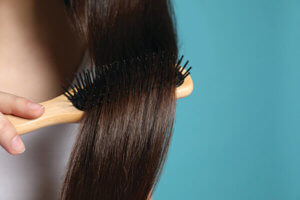What is the autonomous sensory meridian response? How can it be used to help your customers fall asleep more quickly and sleep more deeply?

Editor’s note: Savvy mattress retailers want to do everything they can to help their customers sleep better, including offering them sound advice and tips. Feel free to share this great guidance from Better Sleep Council spokeswoman Lissa Coffey with your shoppers (with credit given, of course). The BSC is the consumer-education arm of the International Sleep Products Association.
There are more than 13 million autonomous sensory meridian response videos on YouTube, with hundreds of millions of views. Most of the videos are designed to help people get into a relaxed state so they can relieve stress and sleep better. There also are many popular audio-only ASMR recordings available for download on streaming services. What is this trending phenomenon and how does it work?
Basically, ASMR is a reaction to a gentle stimulus that is felt physically and emotionally and has been found to produce physiological benefits. The sensations vary among those who experience it, but most people report a sense of calm and relaxation. The physical sensations usually begin in the head and move into the neck and shoulders, even down to the base of the spine. Some say they also experience the sensations in their limbs. ASMR can feel like tingles, chills or gentle waves. The pleasing emotional effects are what cause people to seek out the stimulus and often are described as calming, happy, euphoric, relaxing and sleepy. One study indicated those who experienced ASMR had a reduced heart rate and an increase in positive emotions. Some participants even reported a reduction in chronic pain.
 What is surprising is that these effects are the result of a stimulus that is gentle and subtle. It could be as simple as the tapping of a finger. Or it could be intricate and complex, such as the re-enactment of a typical visit to the hair salon.
What is surprising is that these effects are the result of a stimulus that is gentle and subtle. It could be as simple as the tapping of a finger. Or it could be intricate and complex, such as the re-enactment of a typical visit to the hair salon.
Triggering ASMR
ASMR can be experienced in two ways. The first, and most common, is through external stimuli. This is where the YouTube videos come in handy. Yet, it’s easy to create your own external triggers once you know what they are. The other way to experience ASMR is through internal stimuli, such as creative visualization or meditation techniques.
Triggers fall into three different categories. Auditory stimuli could be the sound of a whisper, reportedly the most popular ASMR trigger. You don’t even need to hear the actual words; just soft vocal tones can set off ASMR. Other auditory triggers include a monotone voice, soft tapping, scratching, crinkling paper or blowing. It also can be the sound of slowly clicking through the teeth of a comb or the sound of hair being cut or brushed.
Visual stimuli may be experienced either internally or externally. Taking yourself to a restful place or looking at the ocean, for example, can trigger ASMR. Writing is another common trigger, as is eye contact and page flipping. Some say flowing hand movements set off ASMR in them.
Tactile stimuli also can evoke ASMR, such as touching soft fabrics like velvet, or stroking a pet. It’s no surprise that a massage can be very relaxing, and for some people this may be ASMR at play. A light touch, such as a gentle caress of the face, can also trigger ASMR.
All of these stimuli are comforting, gentle, repetitive and nonthreatening. They are performed slowly, steadily and predictably. Researchers say the most effective types of stimuli for ASMR include the person receiving attention in some way, through grooming or other care. You’ll notice that many ASMR recordings include a combination of stimuli for greater effect. The presenter speaks to the viewer personally — slowly and quietly, in a pleasant and reassuring tone. This helps the viewer feel relaxed and cared for, a state of mind that contributes to the desired response.
A “happy” brain
Research suggests that the same brain chemicals that are produced in the process of bonding, which also creates a sense of comfort and calm, are responsible for ASMR. Endorphins, sometimes called our “happy” chemicals, can generate a tingling sensation and sense of euphoria. Endorphins also stimulate the release of dopamine. Dopamine is a chemical messenger that drives us to look for stimuli to trigger the release of endorphins. Then there’s oxytocin, also called the “bonding hormone” that produces feelings of contentment and trust. Oxytocin increases our sensitivity to endorphins and stimulates the release of another brain chemical, serotonin. Serotonin helps give us a feeling of well-being and sense of satisfaction. It helps us feel happier in general.
Each of us produces the brain chemicals that are said to be the cause of ASMR. And yet, the ASMR experience varies widely from person to person. It might be we need to find the right trigger for ourselves, or it might be a difference within our own genes. Just as some people taste a spice differently — some preferring lots of heat and others more sensitive to even the smallest bit — our need for a stronger or weaker ASMR stimulus could be genetic. However, we can train ourselves to be more sensitive to stimuli, and thereby more likely to experience ASMR.
First, experiment with a few of the more common ASMR triggers to see which appeals to and works for you. Then, like you would before meditating, find a safe and comfortable environment where you can relax. Since this is meant to be used as a sleep aid, feel free to lie down. If it’s bedtime, tuck yourself into bed. Clear your mind and focus on the stimulus and check in with your body and emotions to better understand where and how you may feel a response.
ASMR recordings most frequently are used to help people get into a relaxed state so they can fall asleep more easily and sleep more soundly. These recordings are similar to the guided meditations that have been used for many years to help with sleep problems. Listening to a recording or watching a video helps to focus our attention and keep us from being distracted by unresolved problems of the day. It helps relax the body, releasing muscle tension and allowing for deeper, slower breathing. This is a great way to self-soothe, with no negative side effects and no financial investment.
 Lissa Coffey is a relationship expert, author of several books and broadcast journalist. A spokeswoman for the Better Sleep Council, she stars in several videos that offer sleep and mattress-shopping tips for consumers.
Lissa Coffey is a relationship expert, author of several books and broadcast journalist. A spokeswoman for the Better Sleep Council, she stars in several videos that offer sleep and mattress-shopping tips for consumers.







